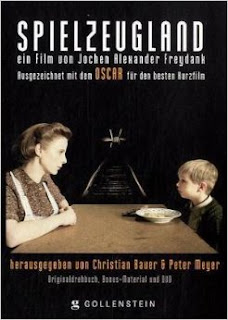Here is a list of the best 21st century short films according to the xdrfmag website
Psychologically profound and thoroughly engaging, ''Deeper Than Yesterday'' (2010) knows exactly how to tow the fine line between a captivating piece of entertainment and an esoteric social commentary on the human condition. Both deeply disturbing and fantastically captivating, ''Deeper Than Yesterday'' may easily be one of the best, if not the single greatest short film of the millennium.
Featuring arguably what is the finest dialogue ever conceived in a short film, Martin McDonaugh’s Oscar-winning ''Six Shooter'' (2004) is a hilariously macabre masterpiece made poignant to boot, thanks to its riveting ensemble cast and consistently surprising narrative twists. Whilst not a film that impresses in visual scale, ''Six Shooter'' is the type of accomplishment that banks entirely on the complexity of the themes of loss that it so astutely dissects.
Two absolutely stunning child actors bolster a narrative heavily reliant on planting and payoff. In many ways, ''The Confession'' (2010) works as the ultimate template for how to construct a perfect short film. No scene feels wasted and no performance unnecessary. ''The Confession'' is an absolutely brilliant criticism of Christian belief and the meaning of redemption.
Harrowingly tragic and beautifully shot. Thanks to telling a nuanced story first and foremost, ''Spielzeugland'' (Toyland, 2007) is a rare example of a short film that somehow manages to pull off multiple locations, eras and set pieces without feeling too big for its own good.
Tragic, poetic and visually expressive. ''THE Last Farm'' (2004) presents visual storytelling of the highest caliber. Without so much as uttering a single important sentence, viewers are relayed a profound message of undying love.
Quirky and undeniably goofy, ''God of Love'' (2011) is probably hit-or-miss comedic material for most people, but where it excels is its composition, consistently juxtaposing its protagonist amidst a bleak, monochromatic New York that is still fueled with passionate love through its careful production design and simple, yet effective blocking. ''God of Love'' is deceptively simple. It is a film that looks great and doesn’t demand the complex equipment that can turn some short films into multi-thousand dollar productions, because where its true complexity lays in its charm.
A unique look at the fears of commitment, ''He Took His Skin Off For Me'' (2014) is a short film that excellently commands voice over and makeup effects in order to tell a grizzly but deeply meditative story of a woman who fears that she isn’t ready to offer as much of herself to her boyfriend as he has.
Visual gimmickry can often be shrugged off as weak filmmaking, but ''Random Stop'' (2014) is purely traumatizing. Rarely does a film so viscerally make a viewer’s blood boil and carelessly let the viewer fall halfway into a terrifying roller coaster. It is unflinching and absolutely brilliant as a result. And the fact that its all done in a single point-of-view shot is all the more impressive.
Farcical to a T and executed with a casual sass, ''The New Tenants'' (2009) is the rare situational comedy where the sketch elements do not derail the strength of the character writing.
When a filmmaker considers what it means to write a strong three-minute dialogue, they need look no further than ''Just a Minute'' (2015), a quiet, whimsical short about the relative nature of time and what we can learn from it. Thanks to meticulous production design and restrained visual execution, ''Just a Minute'' is allowed to shine as a strong dialogue piece that allows for the audience to inspect its message through words without distraction.
Original Material-http://www.xfdrmag.net/21-short-films-for-the-21st-century/











Comments
Post a Comment